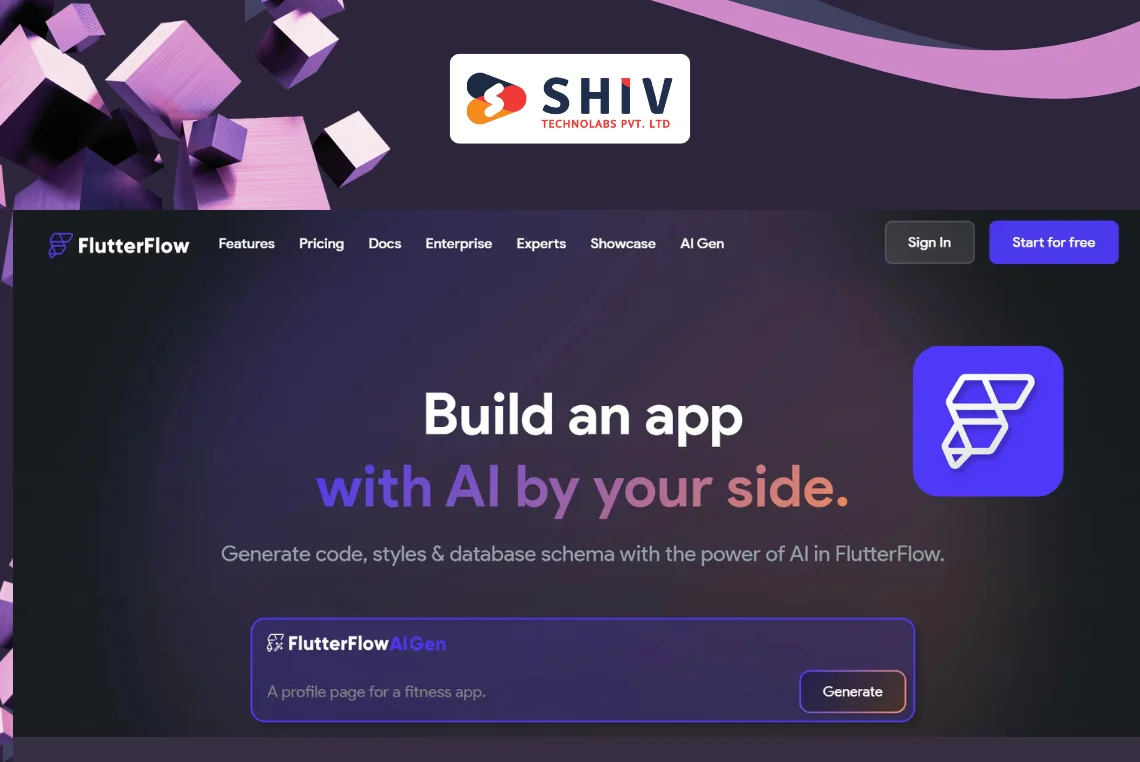Table of Contents
Mobile apps shape how people shop, learn, book services, and stay in touch across moments that matter. Strong products keep users returning, improve ratings, and support predictable growth through daily habits and clear value. A focused plan helps teams ship faster while reducing common risks across concept, build, release, and updates.
Apple’s ecosystem offers consistent performance, trusted security, and polished device features across iPhone, iPad, and Apple Watch. These strengths help teams ship stable builds, handle payments safely, and reach buyers who value quality experiences. You also gain App Store reach and a support system that rewards helpful features and honest communication.
Many teams choose iOS app development services to structure the scope, schedule work, and keep progress transparent for stakeholders. If you plan iPhone app development for a new idea or an upgrade, learn each step first. A clear roadmap avoids missed expectations, supports smart tradeoffs, and keeps your product moving toward market fit with steady progress.
What Are the Key Steps in the iOS App Development Process?
The iOS app development process turns your idea into a reliable release through simple, repeatable stages. Each phase shapes decisions, reduces risk, and matches features to the needs of real users. That rhythm supports predictable delivery during mobile app development for iOS, from first sketches to App Store approval.
Step 1: Ideation and Planning:
Define the problem, audience, goals, and success metrics in plain language that everyone understands. Map features, data rules, privacy needs, App Store policies, milestones, and budget, so the team agrees before coding.
Step 2: Designing the App (UI/UX):
Plan flows that finish tasks quickly with readable type, clear labels, and thumb-friendly controls. Build wireframes and clickable prototypes, gather quick feedback, and adjust screens before writing expensive code.
Step 3: Coding and Development:
Set up the project structure, pick modules, and write clean Swift with tests and useful comments. Build in small slices, integrate APIs, and keep a stable branch so releases ship without drama or delay.
Step 4: Testing and Quality Assurance:
Run unit, UI, and performance tests on devices across screens and current iOS versions. Fix crashes, memory leaks, and slow views, then confirm analytics, payments, and permissions behave correctly on real paths.
Step 5: Release and Maintenance:
Prepare screenshots, copy, and privacy details inside App Store Connect, then submit your build. After approval, watch reviews, crash logs, and usage trends, and ship updates that keep the app fast and safe.
Need expert help turning your plan into a working iOS build that users love and keep using? Our team ships clean Swift code, reliable releases, and clear communication across planning, builds, testing, and launch.
<image> How to Choose the Right Tools for iPhone App Development?
Choosing the right tools for iPhone app development is key to ensuring that your app is efficient, stable, and easy to maintain. The tools you select will impact how smoothly the app functions, how easily developers can integrate new features, and how scalable your app is in the future.
Key Tools for iPhone App Development:
- Swift: The preferred programming language for mobile app development for iOS, Swift is fast, powerful, and easy to learn. Its safety features, like optional types, help avoid crashes and ensure clean code.
- Xcode: This integrated development environment (IDE) by Apple is the main tool used for building iOS apps. Xcode includes everything developers need to write, test, and debug code, including a simulator to run apps and a performance profiler.
- iOS SDK (Software Development Kit): The iOS SDK provides all the resources needed to build applications for iPhone, including frameworks, libraries, and tools for accessing system functionality like maps, camera, and notifications.
Why These Tools Matter
When it comes to iPhone app development, Swift and Xcode are the most popular and efficient tools. They are tightly integrated with Apple’s ecosystem, ensuring that your app can take full advantage of the latest features and updates. Their familiarity among developers also means you can find skilled professionals with the expertise you need to get your app up and running.
What Are Common Mistakes in iOS App Development to Avoid?
Mistakes in iOS app development can be costly and time-consuming. Avoiding the common pitfalls in the development process helps ensure a smoother build and faster release. Here are some of the most frequent mistakes developers make and how to avoid them:
Failing to Plan Properly
Before jumping into development, it’s critical to establish clear goals, a timeline, and a well-defined budget. Without this foundation, teams often find themselves reworking features or dealing with unexpected delays. Proper planning keeps everyone aligned and minimizes last-minute changes.
Ignoring User Experience (UX)
An intuitive, easy-to-navigate app is crucial for user retention. Failing to prioritize UX can lead to frustration, negative reviews, and high uninstalls. Ensure your design is simple, intuitive, and focused on what users need most. Test the interface early with real users and adjust based on feedback.
Not Testing Enough
Skipping thorough testing can lead to bugs or performance issues that might slip through unnoticed until the app is live. Invest time in unit tests, integration tests, and user acceptance tests. Testing your app on different devices and operating systems helps identify and fix issues before launch.
Overcomplicating Features
While it’s tempting to add as many features as possible, overloading an app can make it sluggish and difficult to use. Stick to the essential features that align with your app’s goals, and add complexity only after you’ve received feedback from initial users.
Lack of Post-Launch Support
Once the app is live, it’s not the end of the road. Regular maintenance, bug fixes, and updates are necessary to keep the app functional and relevant. A lack of post-launch support can lead to frustrated users and poor reviews, which can hurt your app’s reputation and success.
How to Estimate the Cost to Develop an iOS Mobile App?
Understanding the cost to develop an iOS mobile app involves more than just the hours worked by developers. Several factors influence the final price, and knowing what affects these costs can help you plan your budget more effectively.
Factors Influencing Cost:
- App Complexity: A simple app with basic features will cost less than a complex one with advanced functionality. Adding things like real-time data sync, push notifications, and payment integrations will increase development time and cost.
- UI/UX Design: The more custom and intricate the design, the more time it takes to develop. Simple, minimalist designs cost less than highly interactive ones that need more design resources.
- Development Team Rates: The cost also depends on where your development team is located. Developers in regions with higher costs of living (like the U.S. and Western Europe) tend to charge more than those in Eastern Europe or Asia.
- Maintenance and Updates: Ongoing costs include bug fixes, updates, and improvements after the app is launched. Regular maintenance ensures the app remains compatible with future iOS updates and continues to function smoothly.
By estimating these variables, you can build a more realistic budget that accounts for development time, resources, and post-launch costs.
How Do You Choose the Right iOS App Development Company?
Picking the right iOS app development company shapes results, timelines, and long-term support. Start with work samples that match your domain, device targets, and complexity. Look for shipped apps with solid ratings, recent updates, and clear proof of real usage.
Ask how they plan the scope, handle sprints, and track risks. A steady cadence with small, testable increments keeps progress steady and visible. Confirm who writes code, who tests, and who owns release tasks in App Store Connect.
Things to look for:
- Portfolio and Experience: Relevant case studies, live apps, and measured outcomes.
- Development Process Transparency: Sprint plans, demos, and written updates at set intervals.
- Communication and Support: Single point of contact, quick response times, and clear SLAs.
- Cost and Time Estimates: Itemized scope, assumptions, and change-control rules in writing.
<image> What Are the Benefits of Hiring Professional iOS App Development Services?
Skilled teams reduce rework, shorten feedback loops, and ship stable builds with fewer surprises. With mature patterns and clean Swift, you get readable code that scales with new features and traffic.
You also gain help across testing, release prep, and App Store review questions. That coverage cuts delays and avoids last-minute scrambles near launch day.
Benefits of hiring a professional team:
- Deep platform knowledge and current Apple guideline awareness.
- Faster delivery through proven workflows and ready project templates.
- High-quality code, consistent UI, and accessible patterns by default.
- Post-launch fixes, analytics setup, and data-driven improvement plans.
If you want business goals tied to clear milestones, iOS app development services bring structure, speed, and reliable care after release.
How to Maintain and Update Your iOS Mobile App?
After launch, treat your app like a living product. Watch crashes, reviews, and key funnels, then ship focused updates. Test on the latest iOS versions and active device sizes before each release.
Keep a monthly cycle for fixes and small wins, plus quarterly plans for bigger features. This rhythm keeps users happy and protects store rankings.
Maintenance tasks:
- Bug fixes and performance work guided by crash logs and metrics.
- iOS version and device compatibility checks before each release.
- New feature rollouts with clear changelogs and staged delivery.
Regular care is part of iOS mobile app development and healthy mobile app development for iOS workflows.
FAQ: Common Questions About iOS App Development
1) How long does it take to develop an iOS app?
Simple apps can ship in eight to twelve weeks, while complex builds take longer. Time varies by features, integrations, and approvals.
2) How much does it cost to build an iPhone app?
Budgets depend on scope, design depth, and team rates across regions. Start with a clear MVP, then grow features with real feedback.
3) Can I build an iOS app without coding experience?
No-code tools can help with basic ideas and early tests. For custom logic and scale, a developer or team is usually required.
4) What are best practices for UI/UX in iOS apps?
Use large tap targets, readable type, and short paths to complete tasks. Test early prototypes with real users and refine fast.
5) Do I need to update my iOS app regularly?
Yes, updates keep the app secure, fast, and compatible with new iOS versions. Frequent small releases beat rare large ones.
Conclusion
You now have a simple roadmap that covers planning, design, coding, testing, release, and steady updates. Start small, gather user feedback, and add features once you see clear traction. That approach protects budgets and keeps quality high across future versions.
If you want expert help from concept to launch day and beyond, partner with a proven iOS app development company like Shiv Technolabs. The right team aligns scope with goals, ships reliable Swift builds, and maintains momentum after release. With clear targets, regular testing, and honest tracking, your iPhone app can move from idea to results with confidence.






















